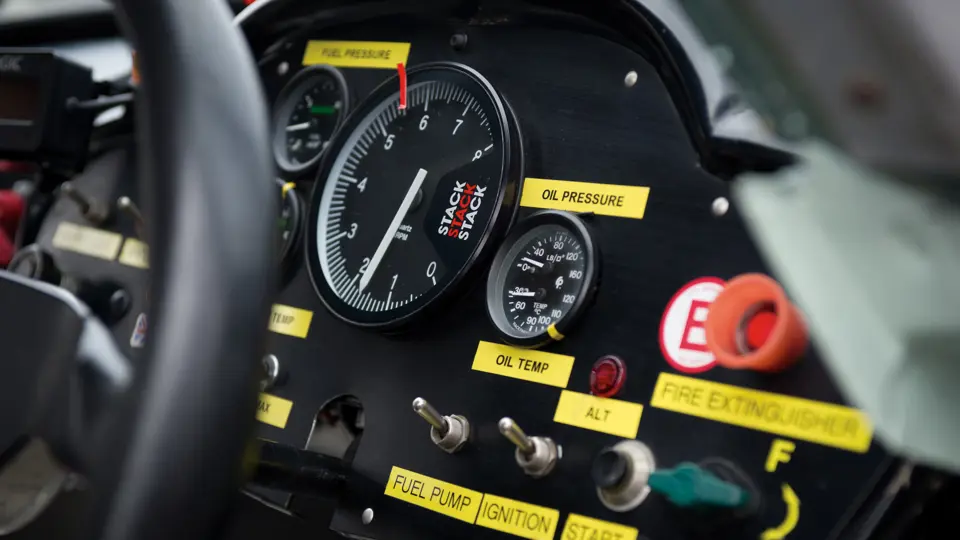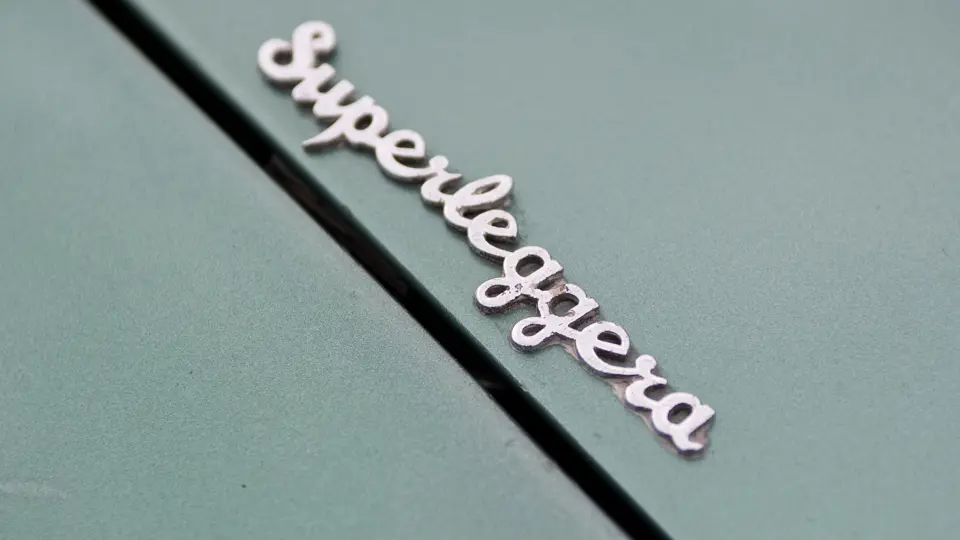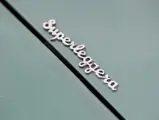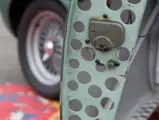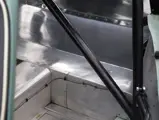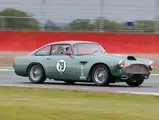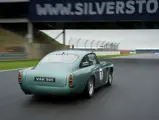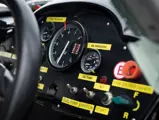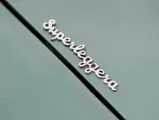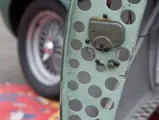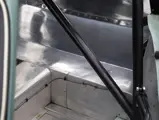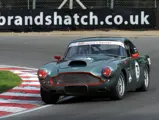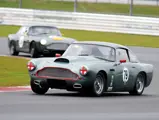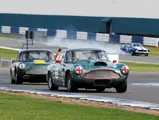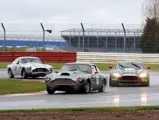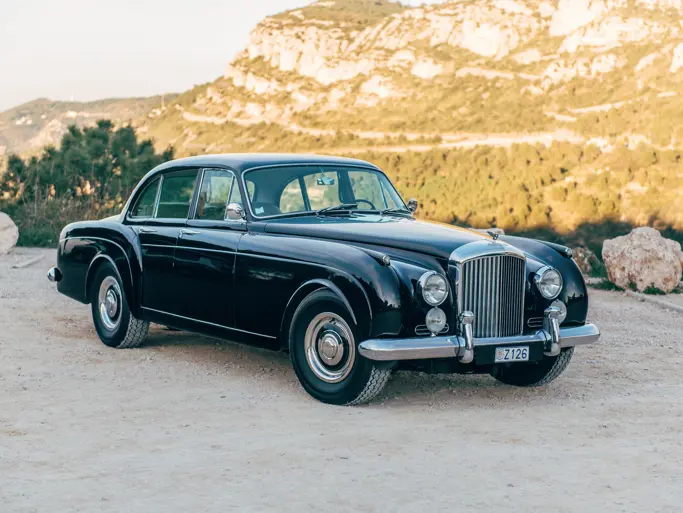400 hp, 4,500 cc dual overhead cam inline six-cylinder engine with three 2-barrel Weber carburettors, four-speed manual transmission with Hewland internals, upper and lower control arms with coil spring front suspension, live rear axle with trailing links and coil spring rear suspension, and four-wheel disc brakes. Wheelbase: 98 in.
• One of 25 lightweight race-prepared DB4s
• Raced successfully in competition since 1980
• Extensively prepared by Colin Blower Motorsport and Aston Engineering
Aston Martin had proved beyond doubt that its competition bona fides in sports car racing with its victory at Le Mans in 1959. The DBR1 racing car was both fast and beautiful, something which could also be said for the latest Aston Martin saloon, which had made its début some months before in 1958. The DB4, designed by Carrozzeria Touring and built using their patented superleggera lightweight technique, seemed a natural for competition work.
Not content with the avoirdupois of the production model, Aston engineers went further in creating their track weapon. The DB4 GT would see the chassis shortened by five inches, the rear seat removed, and the bodywork rendered in 18-gauge magnesium panelling in place of the aluminium alloy of the road cars. To increase its potential for speed, the front end was subtly reshaped to include covered recessed headlights and a slightly smaller grille. Only 75 of this model were built, and they were quite successful in competition. Expensive when new, by the late-1970s, the DB4 GT had not only avoided becoming forgotten and unwanted, but they were already sought-after and costly as collector cars, beyond the means of many who wanted to campaign a DB4 in the newly emerging vintage race arena.
Into this situation came R.S. Williams, Aston Engineering, and John Goldsmith, who in the late ’70s and early ’80s began to work on an enhanced version of the DB4 road car, which would be more competitive on the circuit and more affordable than a DB4 GT. The pair examined ways in which a less extensive but nonetheless effective program could be undertaken to improve the power to weigh ratio. Over 300 kilograms in weight was removed and larger engines were installed, but they did retain their original 98-inch wheelbase.
DB4/552/R was originally supplied on 4th March 1961 by Charles Sidney, of Yorkshire. Used as a hill climb car at AMOC events from 1980–1982, the car was fully rebuilt to lightweight specification from 1986 to 1990 by Ian Mason, Tickfords, and ADA Engineering. Fitted with a 4,200-cubic centimetre engine at that time, DB4/552/R went to Japan and was raced there by Koji Nakauchi for 10 years, before returning to the UK in 2000. A programme of further development ensued to prepare the car to the latest competitive specification, with the engine being upgraded to a 4,500-cubic centimetre unit by Aston Engineering in 2005, followed in 2007 by a new 4500-cubic centimetre race engine and Hewland gearbox internals, with the work again performed by Aston Engineering.
Campaigned extensively in the hands of the vendor, alongside John Bussel and Charlie Kemp from 2003–2012 and prepared without regard to cost by Colin Blower Motorsport and Aston Engineering, DB4/552/R has been a successful veteran of Aston Martin Club racing, competing in over 95 races during that period, of which it finished all except three, thanks to its excellent preparation.
An exhaustive record of its race history and preparation is supplied with the car, and it was the subject of a very recent track test in Octane magazine, with experienced Aston Martin driver and journalist Paul Chudecki at the wheel. This is an excellent opportunity to acquire a well proven and competitive race-prepared lightweight Aston Martin in readiness for the 2013 season at a fraction of the cost of an original DB4 GT!


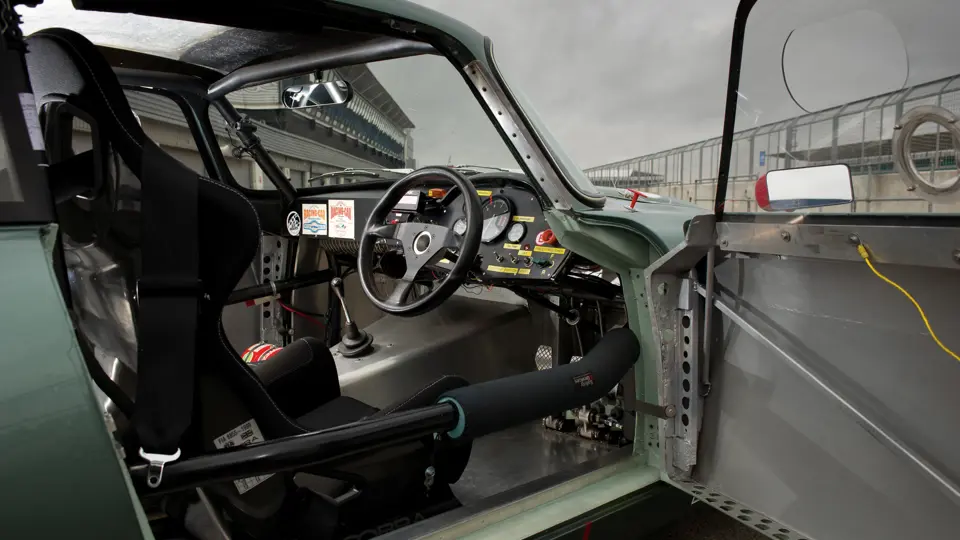

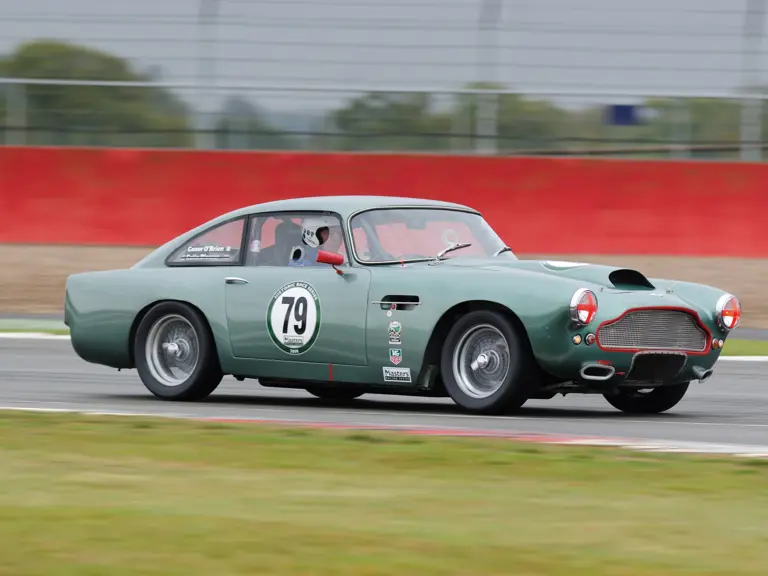
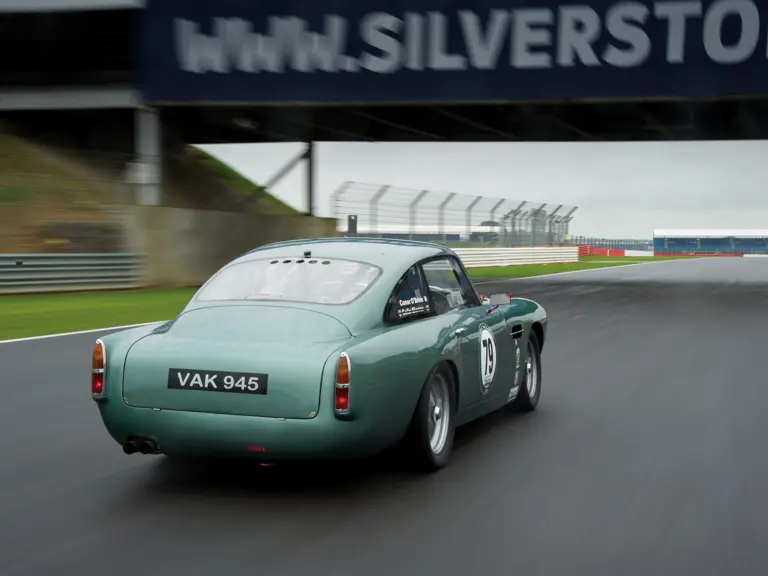
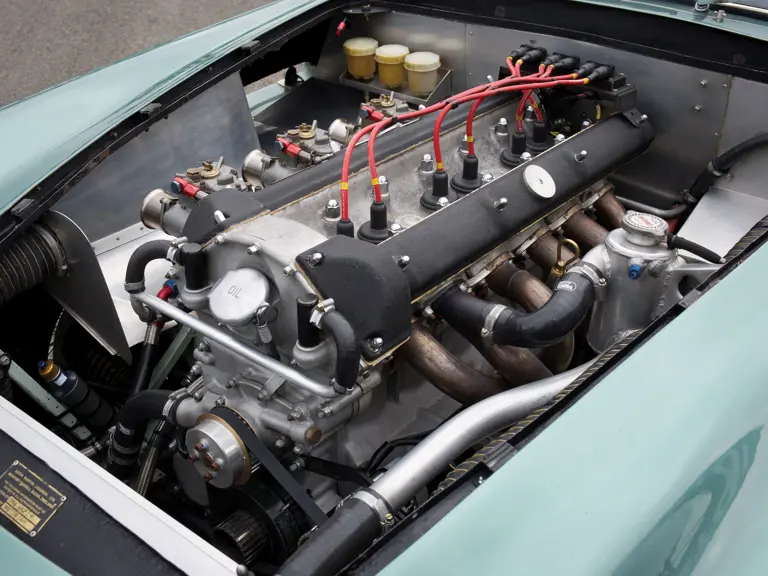
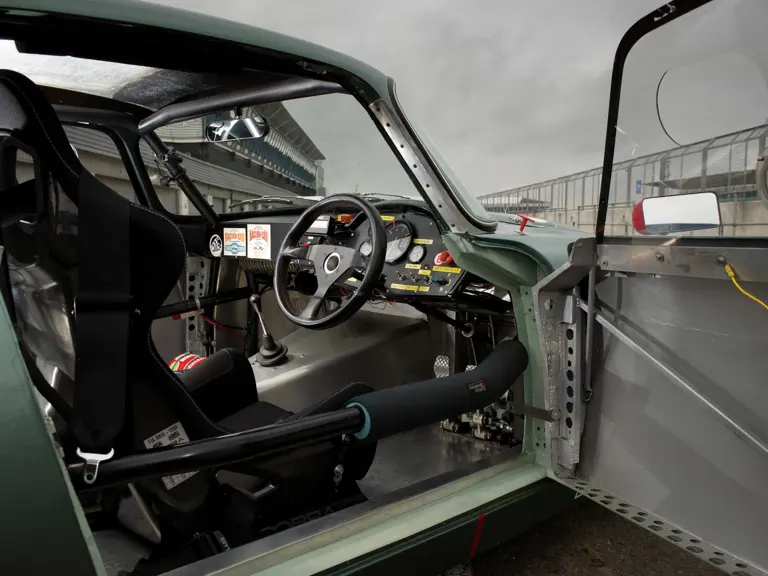
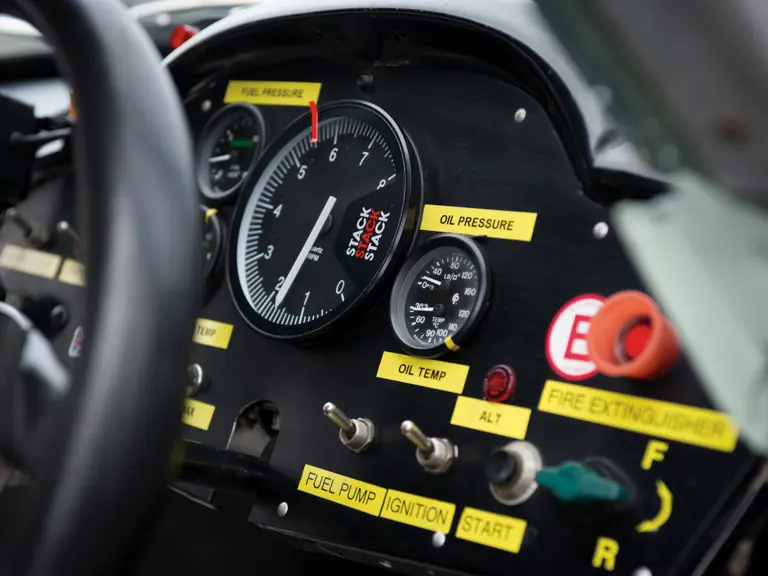
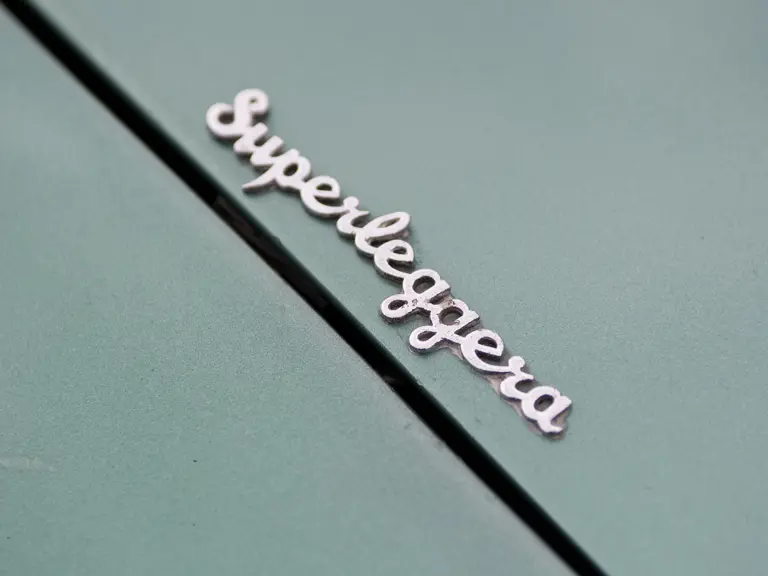
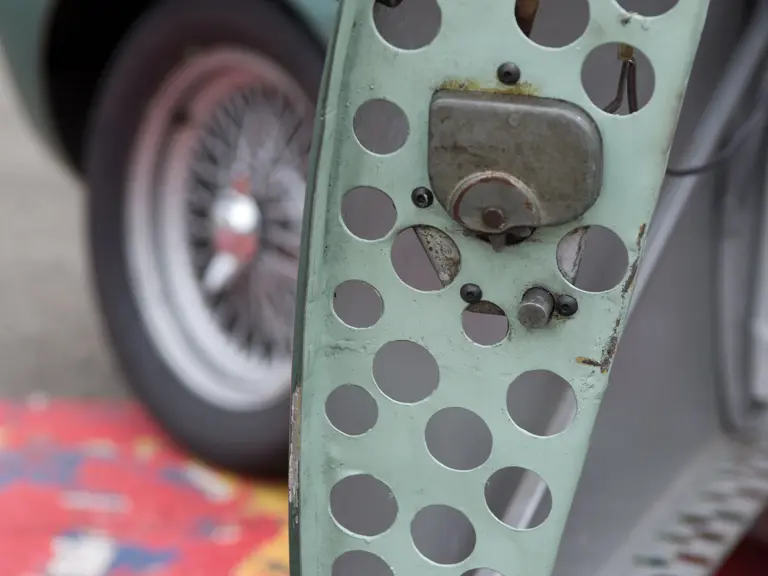
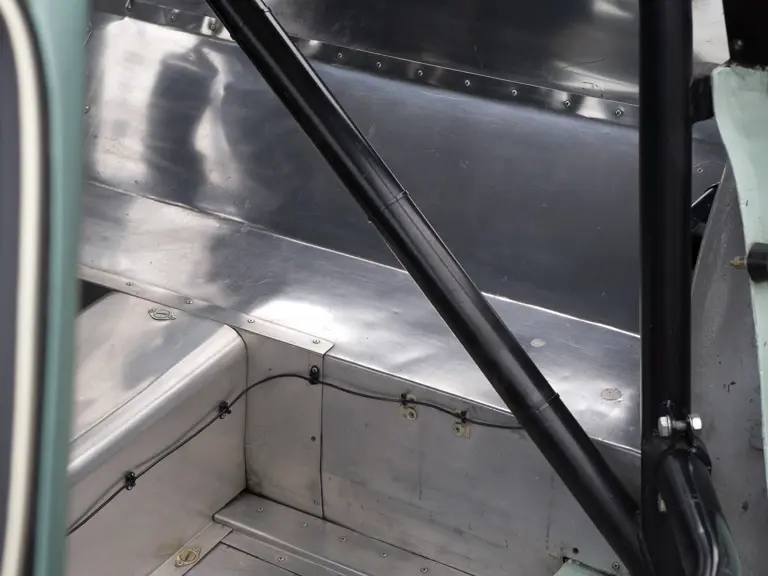

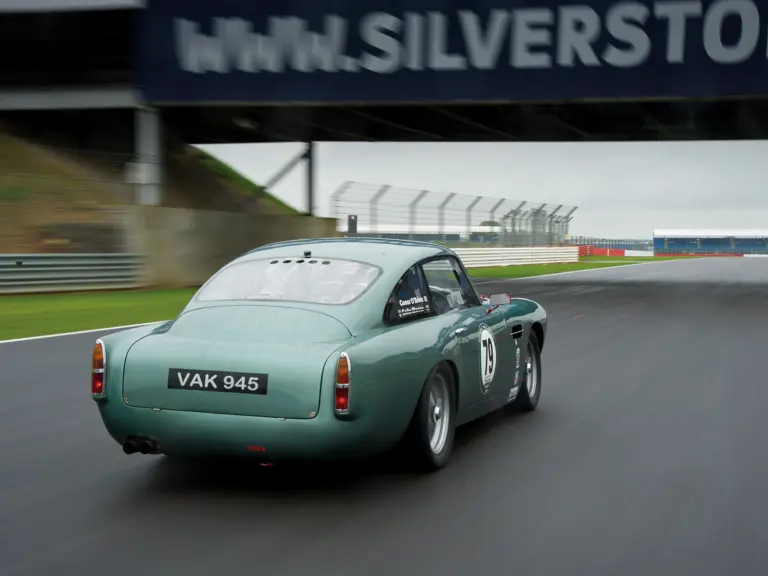
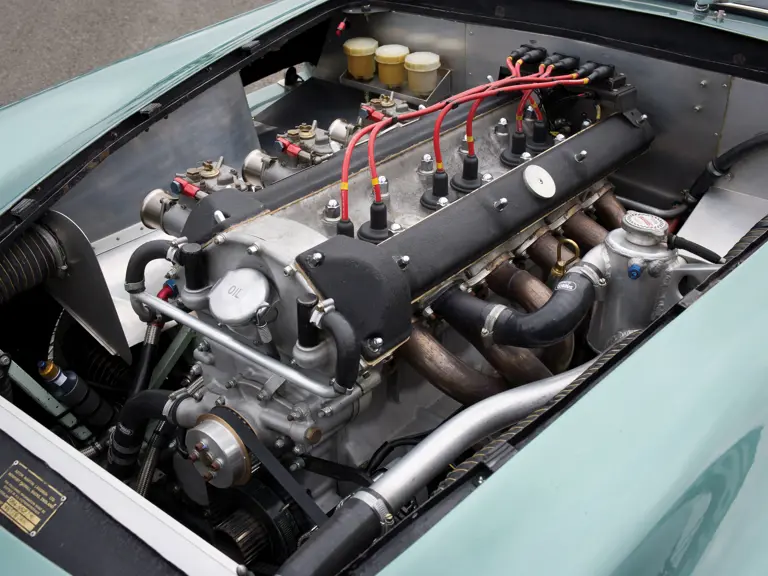
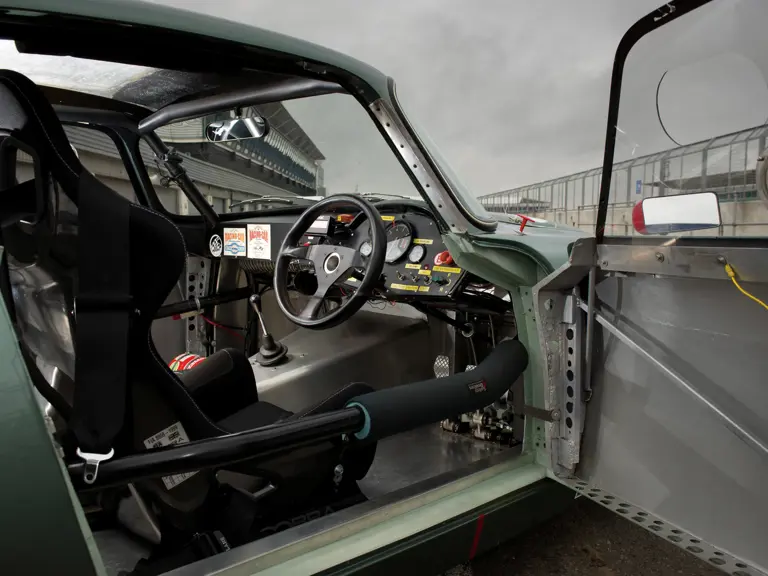
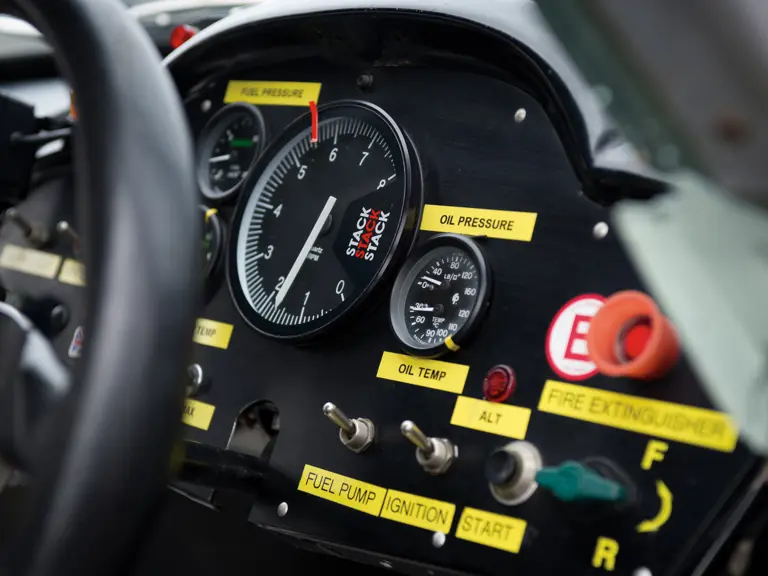
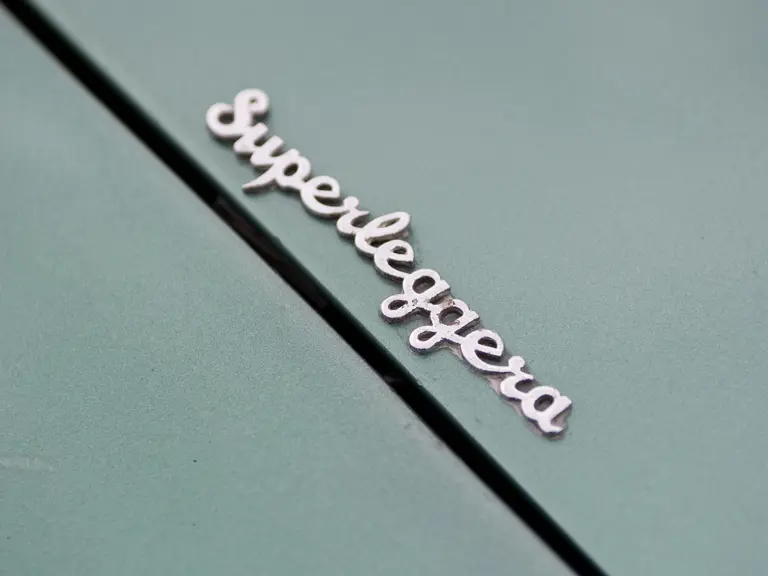
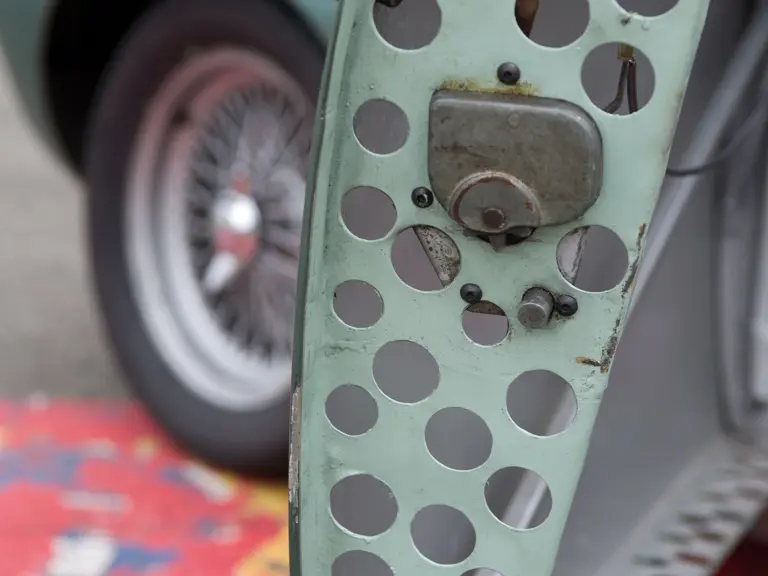
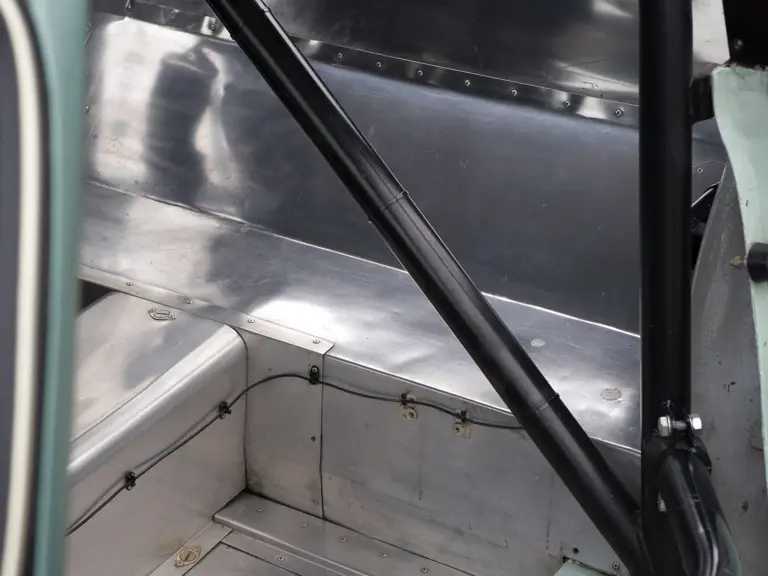
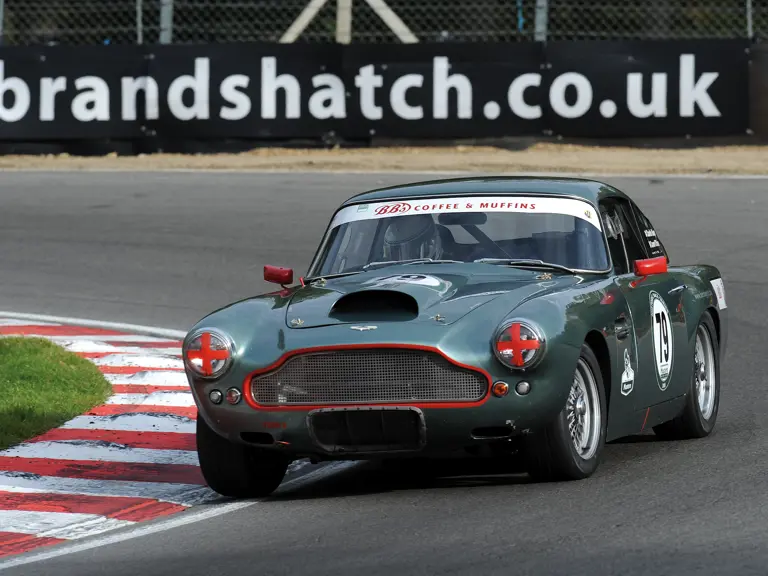
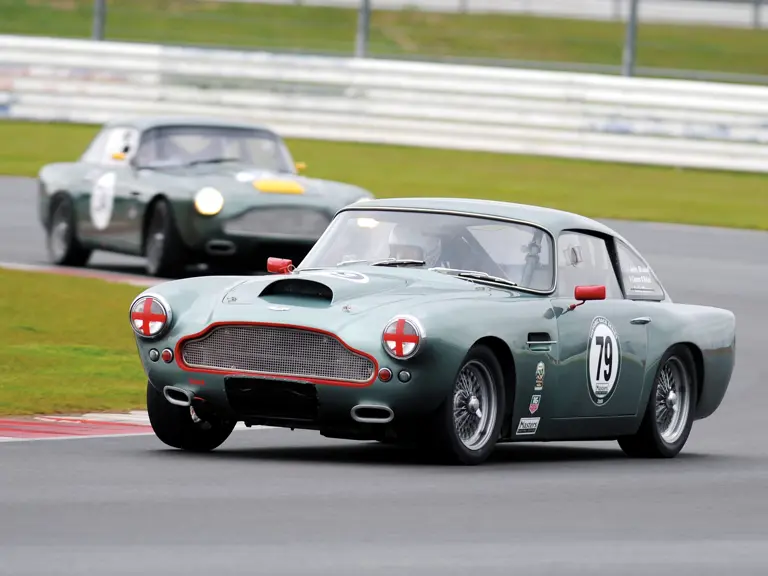
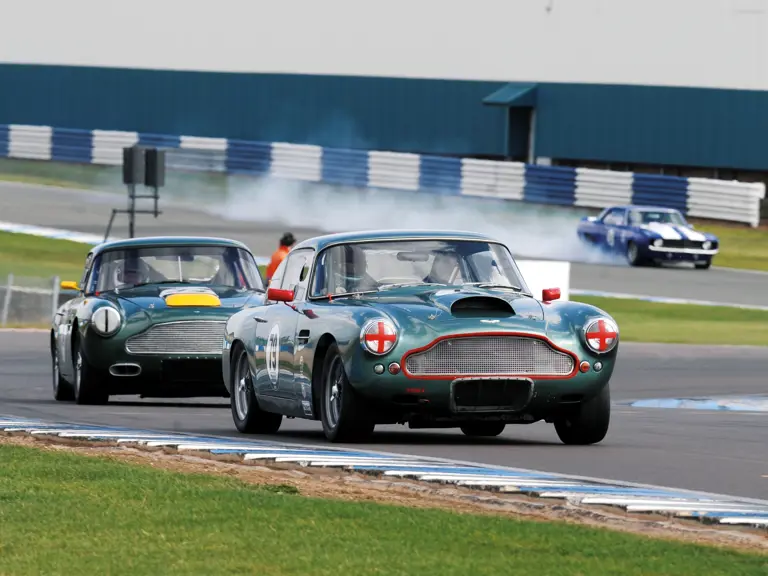


 | London, United Kingdom
| London, United Kingdom
